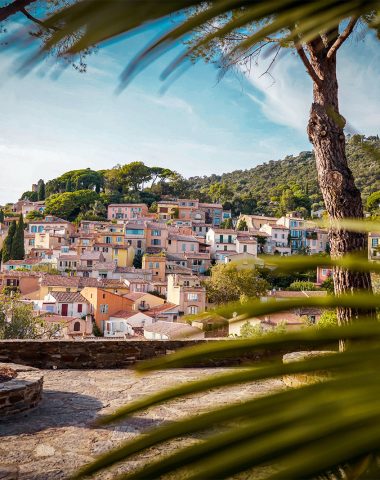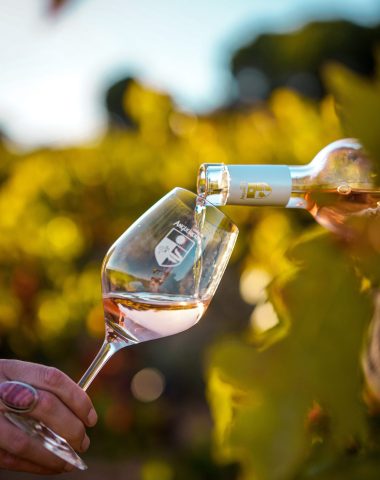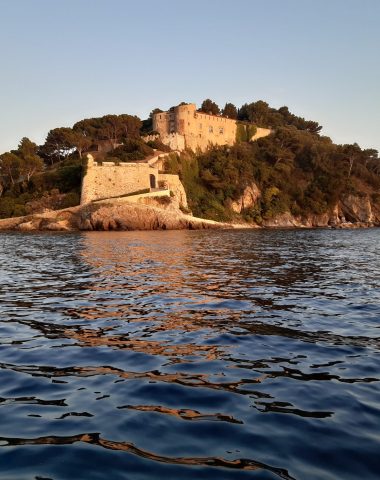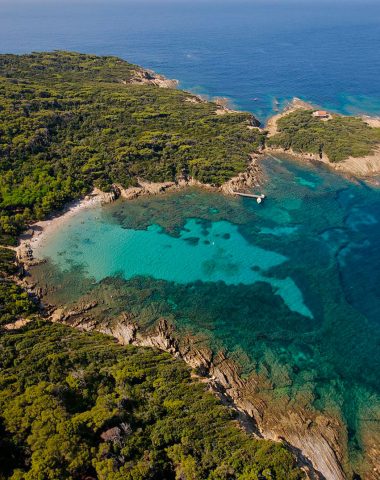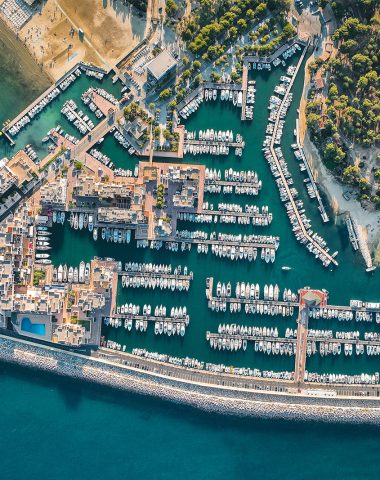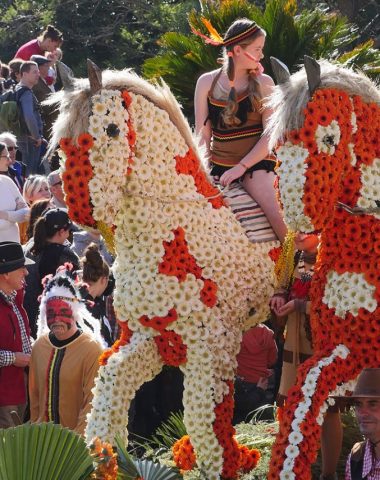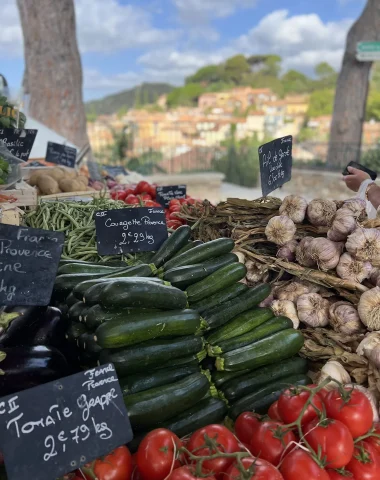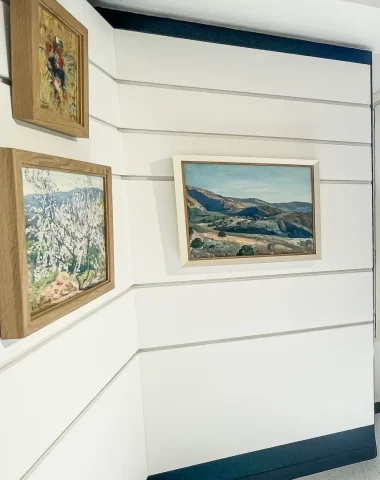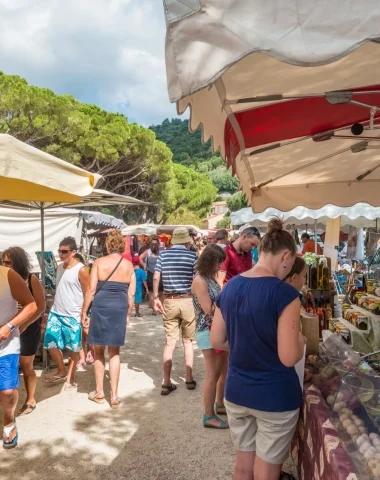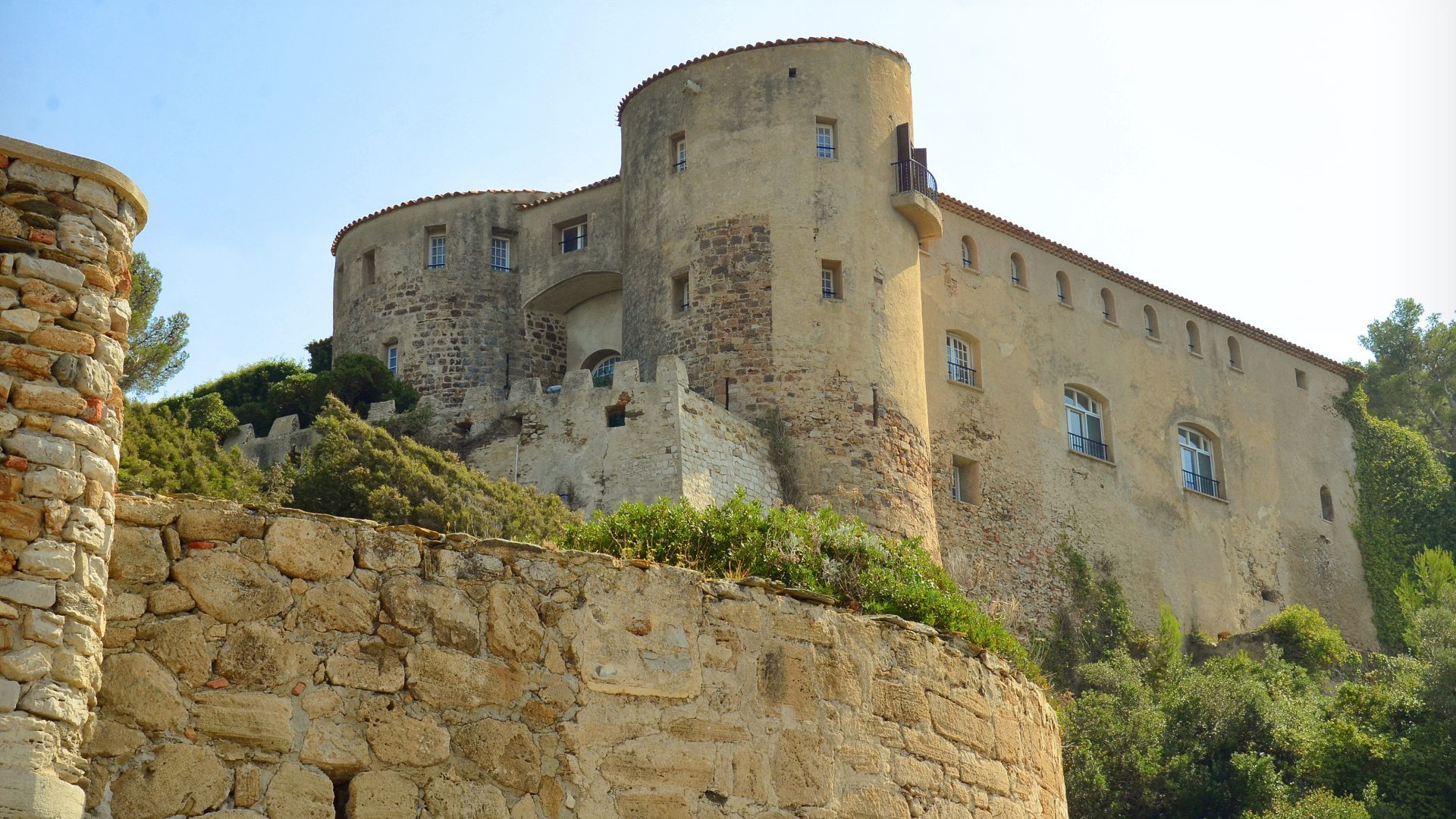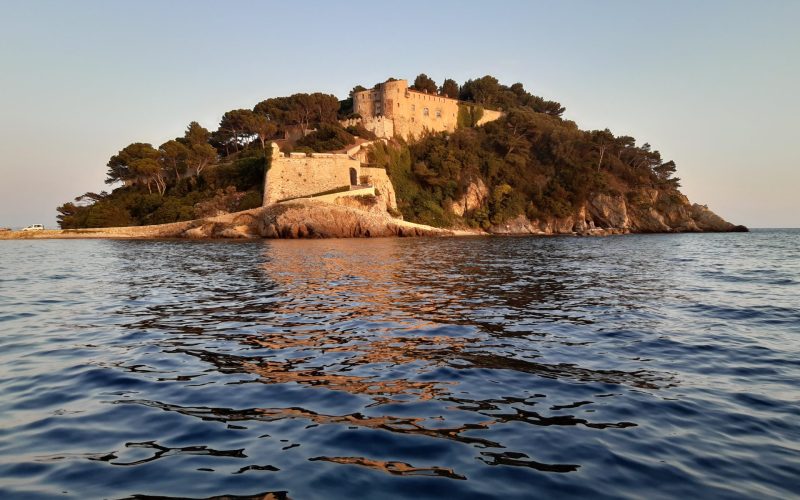Discover the rich history of Fort de Brégançon, an impressive site perched on a 35-meter high rocky outcrop at the tip of the Cabasson hamlet. Overlooking the Mediterranean coast and the islands of Hyères, the fort has a strategic geographical position that made it a prized location throughout history. The islet was first named Pergantium in the 6th century BC, a bustling trading post where goods were exchanged. It was later used as an oppidum maritima, a high point that allowed its occupants to monitor maritime traffic and anticipate incoming threats. In 1968, on the proposal of General De Gaulle, the fort was designated as the official residence of the Presidents of the French Republic. Since then, all the heads of state of the 5th Republic have stayed there during their official visits to the region.
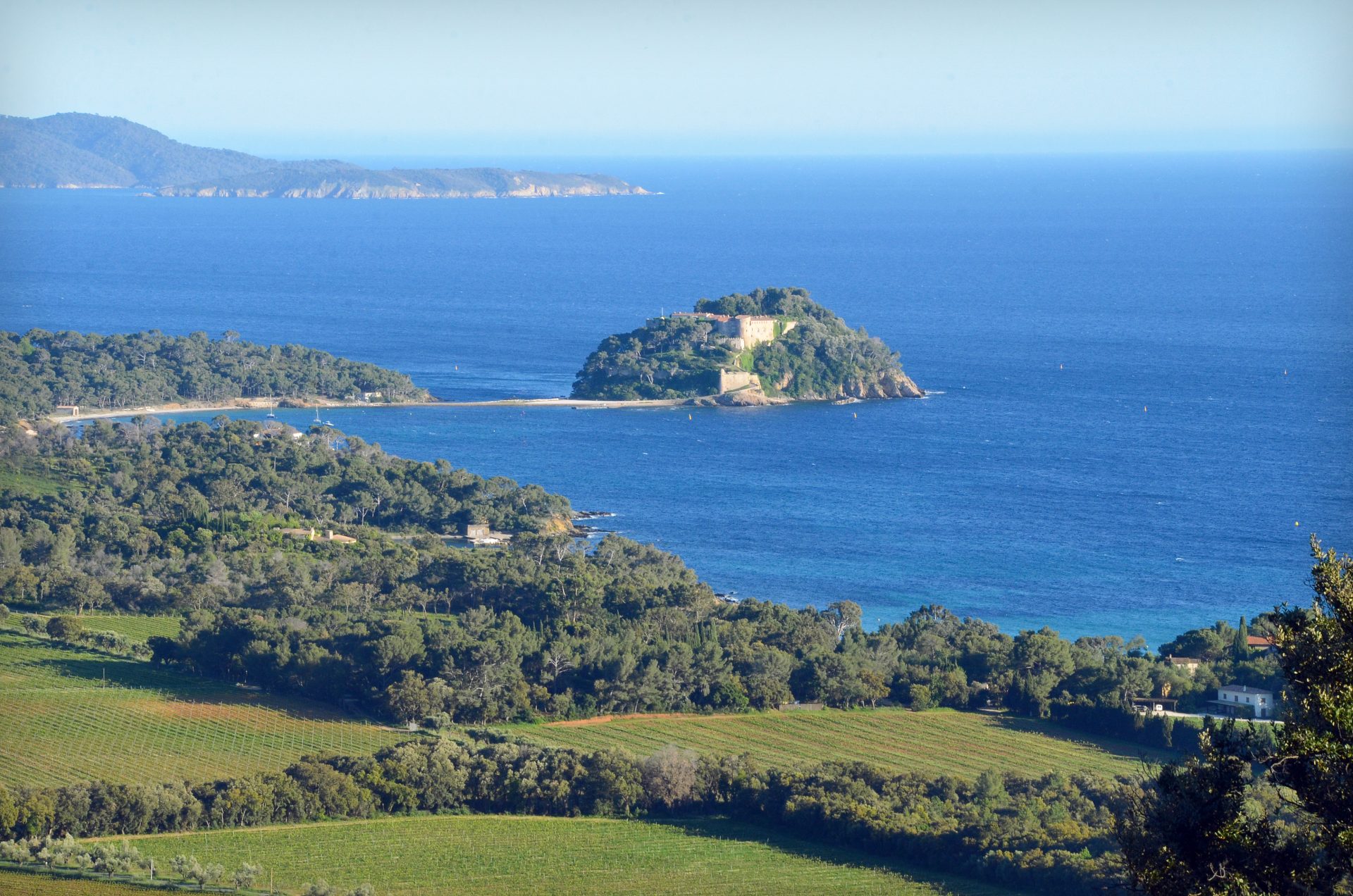
The Fort through the ages
From the 6th century BC to 1348
Over the course of 2400 years, the Fort de Brégançon has played a significant role in history due to its strategic location, which dominates the roadsteads of Hyères and Toulon. Its occupation was swift, as early as the 6th century BC when the Greek geographer Etienne de Byzance identified it as Pergantium, a bustling trading post where many goods were transported. The islet served as an oppidum maritima, a high point from which to monitor maritime traffic and anticipate any threats from the sea.
As a reward for his services, several figures in Guillaume 1er’s inner circle were granted management of vacant land, marking the beginnings of the first seigneuries. And among these holdings was the islet of Brégançon and the fortress (built on the mainland during this period), which became the seigneury of Brégançon.
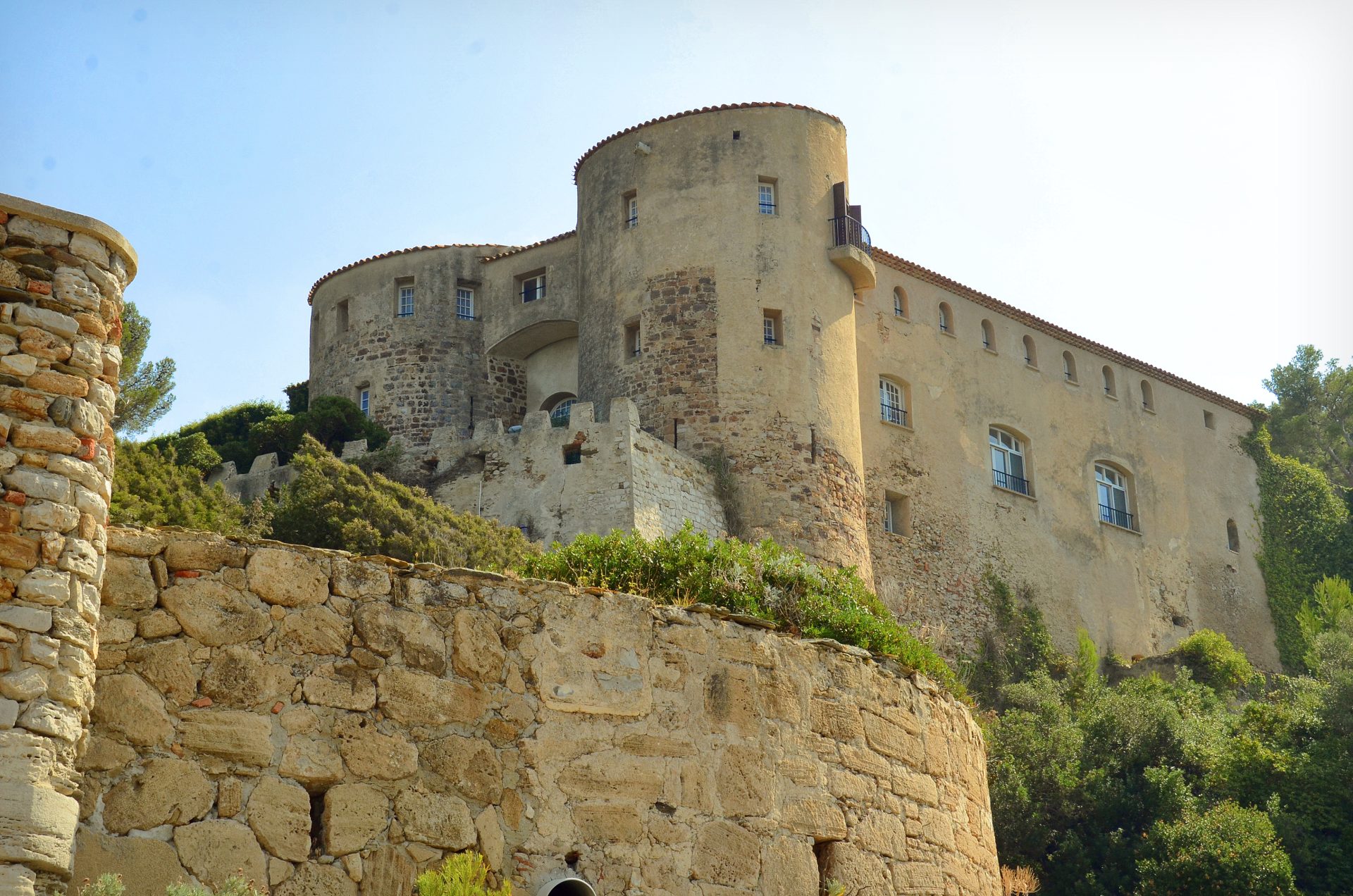
In 1246, Charles of Anjou, younger brother of King Louis IX and Count of Provence, married Béatrice of Provence, the heiress of the county. He wasted no time in expanding his holdings, and in 1257 he purchased the properties of the Marseille community. He then proceeded to drive out the Fos family, reclaiming Hyères, the islands, the salt flats, and the Fort de Brégançon. The castle’s entrance, still standing today, dates back to this time. In exchange for his losses, Roger de Fos was granted 22 localities, including the town of Bormes, making him the first lord of Bormes.
From the revolution to today
In the following centuries, Brégançon witnessed a series of events, such as the passage of the condottiere Spinola, who acted like a true pirate, or the religious wars that were very deadly and destabilizing for this already troubled Provence. During the Revolution, after the recapture of Toulon from the Royalists, Napoleon, then a young captain, was tasked with restructuring the defenses of the Mediterranean coast. In the winter of 1793-1794, Napoleon stayed at the Fort, equipping it with a battery of 36 cannons and restoring its important role in the defensive plan of the area.
After the First World War in 1919, the fort was no longer considered a military site but was classified as a picturesque location in 1924. Robert Bellanger, a French industrialist and politician, then leased the Fort from the state. He carried out major works such as installing running water, electricity, and a dike, in order to live there comfortably and receive numerous public figures including the presidents of the Fourth Republic, René Coty and Vincent Auriol.
However, the Second World War broke out and the Fort was requisitioned by a German company whose command post was in the village of Bormes. Bellanger was forced to leave the premises. In 1964, during the commemorations of the 20th anniversary of the Provence landings, the President of the Republic, Charles de Gaulle, spent a night at the Fort, and from that time on, the site took on another function.
The presidential residence
In 1968, General de Gaulle spent only one night at the Fort, but he saw its potential and decided to grant it the status of presidential residence. Today, the Fort and its island are classified as historic monuments, and thanks to the work of Pierre-Jean Guth, an architect from the French Navy, the Fort has been transformed into a peaceful and elegant residence while still preserving the old fortress’s character.
Since then, every President of the Fifth Republic has stayed at least once at the Fort
and they have all left their mark on the place…
Georges Pompidou
Georges Pompidou loved it so much that he opened its doors to the media, and many famous artists were invited to redesign the interior
Valéry Giscard d’Estaing
Valéry Giscard d’Estaing brought a fresh and dynamic image to the Fort with his numerous stays with his family
François Mitterand
François Mitterrand found it an ideal place for work meetings
Jacques Chirac
The Fort also has a special place in the heart of President Chirac, who spent part of his childhood in the nearby village of Rayol. He and his wife visited the Fort several times, and they were regulars at the village’s Sunday Mass. Mrs. Chirac even became the honorary president of one of the village’s major events, the Corso Fleuri.
Nicolas Sarkozy
Nicolas Sarkozy also spent time at the Fort, unlike François Hollande
François Hollande
Decided not to use it as a presidential residence and opened it up for public visits in 2014, entrusting its management to the Centre des Monuments Nationaux.
Emmanuel Macron
Emmanuel Macron, President of the Republic since 2017, appreciates the idea of making the site accessible to the French people. He made the compromise of alternating between public visits and presidential residence. He often stays in Bormes les Mimosas during the summer, taking the opportunity to rest with his family while organizing work meetings, even receiving political figures such as Theresa May in 2018, Vladimir Putin in 2019, and Angela Merkel in 2020.


